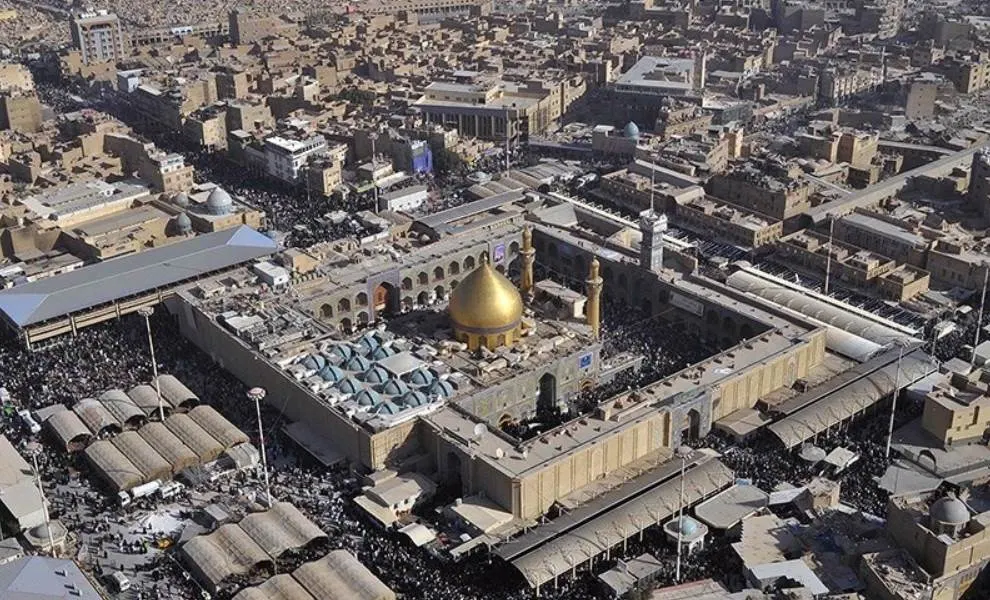Iraq isn’t exactly the most popular tourist destination in the world because of its turbulent recent history.
That makes it all the most surprising that the tourist industry in this country was booming in the 19th century.
Back then, steamers took tourists up the Euphrates and Tigris rivers so they could explore the ancient ruins located in the so-called “cradle of civilization,” a historic region referred to as Mesopotamia.
Today, this is quite a bit more complicated as many parts of this war-torn country are risky to visit, to say the least.
If you do make it to this country, here is a list of some of the most famous buildings in Iraq, structures you should put on your bucket list if you want to explore architecture in the country.
1. The Iraq Museum
The Iraq Museum isn’t the “National Museum of Iraq” but the country’s biggest museum of which the name was inspired by the British Museum in London.
It’s located in the capital of Iraq, Baghdad, and owns a collection of about 200,000 artifacts.
The items on display in this fascinating museum are a combination of Mesopotamian, Persian, and Islamic artifacts.
Unfortunately, the museum was looted during the 2003 invasion of Iraq and multiple precious items were lost. The museum finally reopened in February 2015 and is one of the most popular tourist attractions in Baghdad.

Official website: The Iraq Museum

2. Babylon Ruins
Babylon was the capital city of the 2 ancient Mesopotamian Empires with the same name.
The first one thrived between the 19th and 15th centuries B.C. and the second one during the 7th and 6th centuries B.C., and the city is known for possibly featuring the Tower of Babel and the Hanging Gardens of Babylon.
Its ruins can be found in the modern-day city of Hillah in central Iraq which is situated about 85 kilometers (53 miles) south of Baghdad.
Even though Babylon was an amazing city in antiquity with a maximum estimated population of 200,000, today nothing more than broken mud-brick buildings in Iraq remain on this huge excavation site.

3. Ishtar Gate
The Ishtar Gate is the name of the inner gate of the ancient city of Babylon. A smaller replica of this amazing structure can be found near the ancient ruins of the city in Hillah, Iraq.
The real gate was much bigger and stood approximately 15.24 meters (50 feet) tall.
What we know today as the Ishtar Gate was only the front gate of a huge double gate that stood at the end of the processional way leading into the city.
This enormous structure was excavated by German archaeologists in the 1930s, completely dismantled, and put back together in Berlin.
It can no be found at the Pergamon Museum on Museum Island in Germany’s capital.
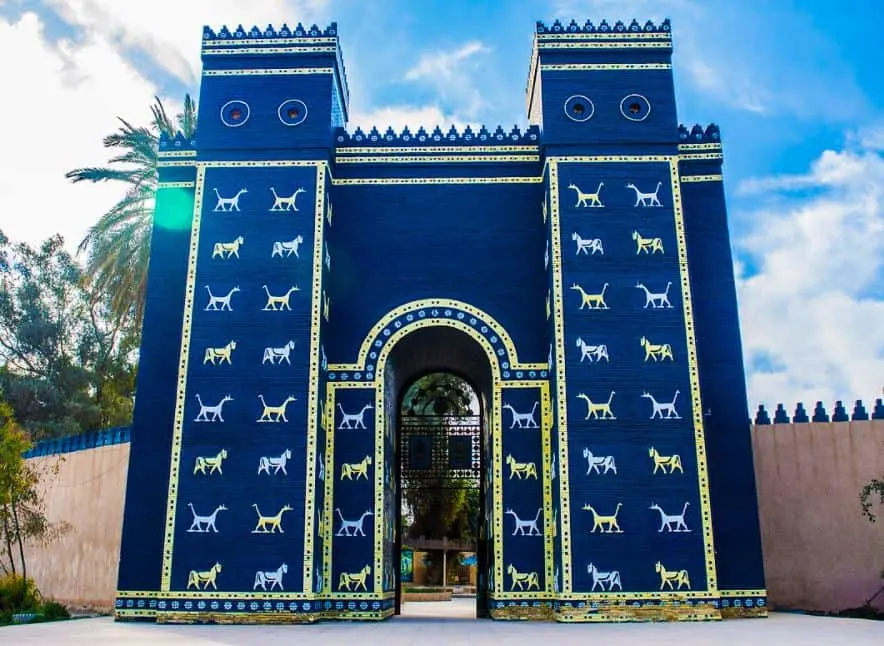
4. Taq Kasra – Arch of Ctesiphon
Taq Kasra is an ancient monument sometimes referred to as the “Arch of Ctesiphon,” the only remains of the ancient city of Ctesiphon.
This city was located on the eastern bank of the Tigris river and approximately 35 kilometers (22 miles) to the southeast of Baghdad.
This fascinating arch and ancient landmark was constructed anywhere between the 3rd and 6th centuries A.D.
The monument reaches a total height of 37 meters (121 feet) and is still the biggest single-span vault of unreinforced brickwork on the planet today.
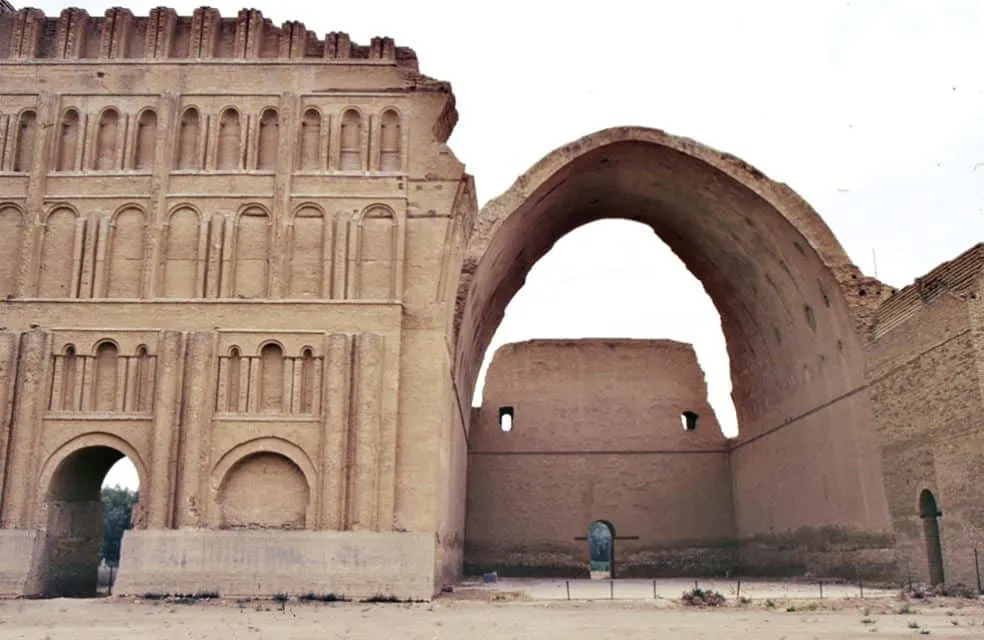
5. Erbil Citadel
Finding the historical center of the city of Erbil, locally known as “Qelat,” in Iraq’s Kurdistan region isn’t that complicated.
It’s situated on a mound on which an enormous citadel was constructed that covers an area of about 430 by 340 meters (1,410 by 1,120 feet).
It’s estimated that there were structures on this location dating back to the 5th Millennia B.C., even though this area only became very important during the Neo-Assyrian period between 911 and 609 B.C.
Today, the citadel is part of a major restoration project which started in 2007 and is meant to allow up to 50 families to live in this amazing location.
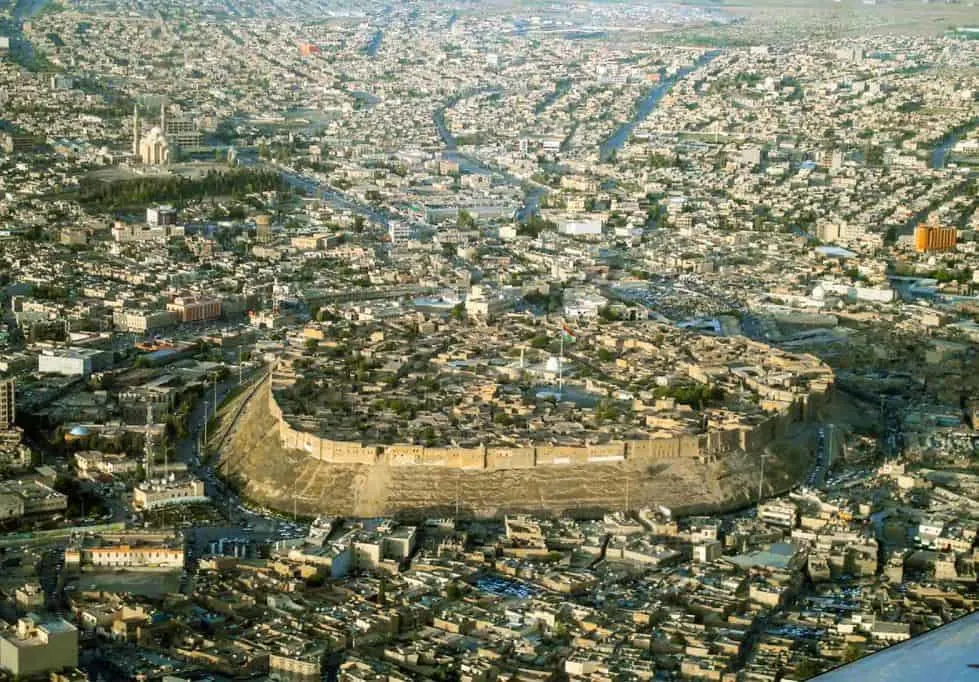
6. Great Ziggurat of Ur
The Great Ziggurat of Ur is locally known as the “Etemenniguru,” a name that translates to “temple whose foundation creates an aura.”
This type of structure was built often in ancient Mesopotamia and this one built in the ancient city of Ur is one of the best-preserved in the world.
The remains of this ancient structure have only been excavated in the 1920s and 1930s under the command of British Archaeologist Sir Leonard Woolley (1880-1960), a man who uncovered multiple structures at Ur.
It’s estimated that this building was constructed during the Early Bronze Age in about the 21st century B.C.
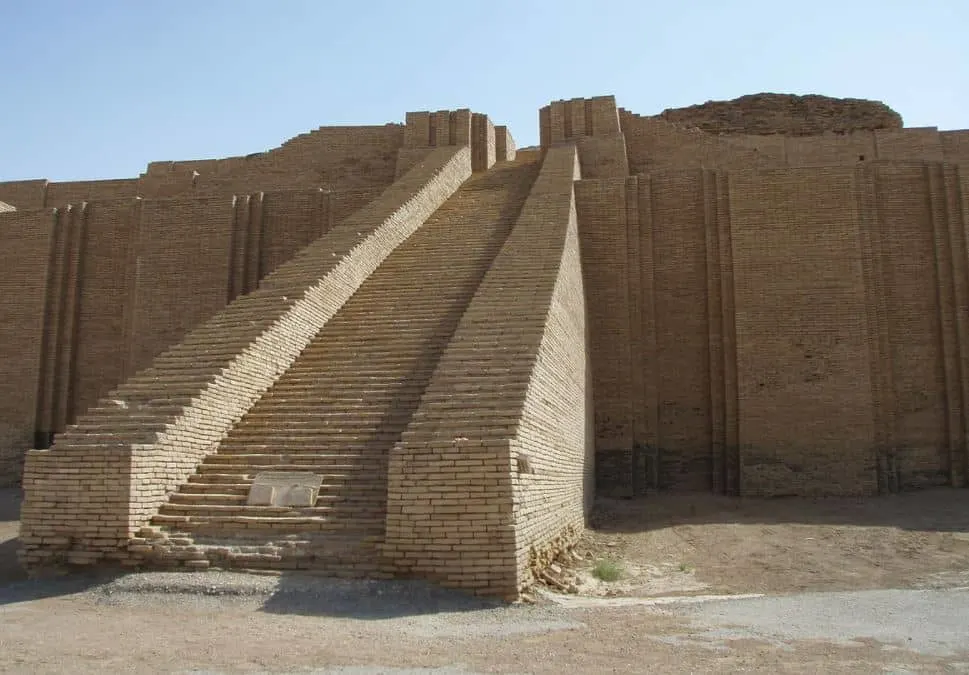
7. Imam Husayn Shrine
The Imam Husayn Shrine is the mosque that serves as the mausoleum of Husayn ibn Ali (626-680), the third Imam in the Islamic religion. He was the grandson of Muhammad, the Islamic prophet.
The mosque is located in the Iraqi city of Karbala in the central part of the country about 90 kilometers (55 miles) southwest of Baghdad.
The magnificently decorated mosque was built on top of the tomb of this important figure of Islam. This is also the location where he was martyred during the infamous Battle of Karbala around 680 A.D.
This is considered to be one of the holiest locations in Islam outside of Mecca and Medina and is visited by millions of people every year. The building is dominated by its gold-covered dome and minarets which makes it one of the most distinctive buildings in Iraq.
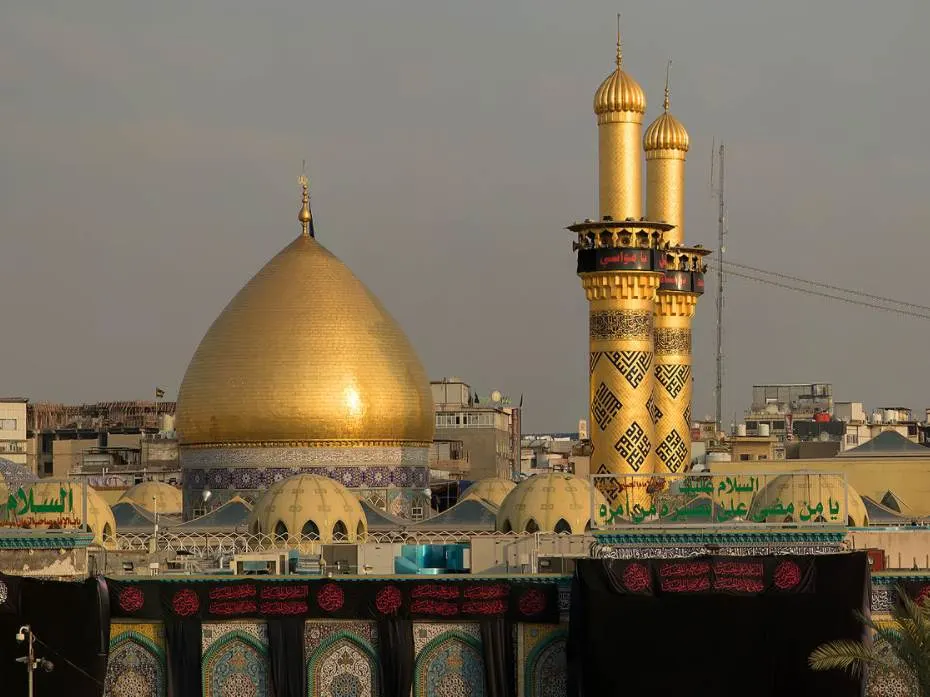
8. Great Mosque of Kufa
The Great Mosque of Kufa is another fascinating structure located in the city of the same name about 170 kilometers (110 miles) south of Baghdad.
The main reason is that it’s considered to be one of the oldest surviving mosques in the world. It was the residence of a man named Ali ibn Abi Talib (600-661), the son-in-law of Prophet Muhammad.
The enormous complex was continuously expanded over the centuries and covers an area of 11,000 square meters (120,000 square feet) today.
The building consists of 9 sanctuaries, features 4 minarets, and can be accessed by 5 monumental gates. The mosque has been renovated extensively in the past decades and it’s by far the most prominent landmark in Kufa.
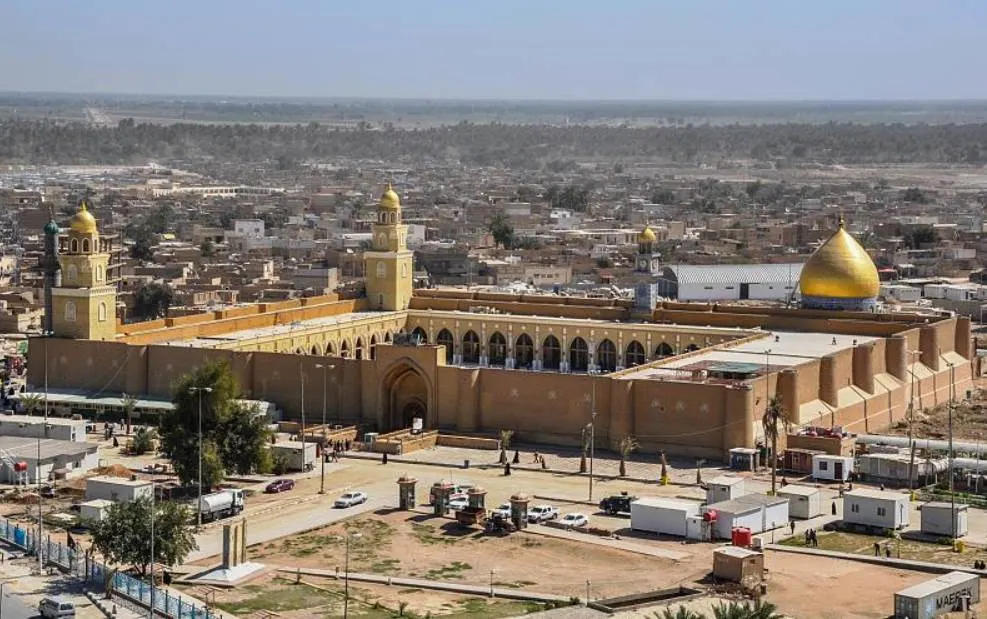
9. Al-Shaheed Monument
The Al-Shaheed Monument is sometimes referred to as the “Marty’s Monument” and is one of the most remarkable buildings in Iraq.
It was designed by an Iraqi sculptor named Ismail Fatah Al Turk (1938-2004) and is located in the northeastern part of Baghdad. It was commissioned by fallen dictator Saddam Hussein in 1983.
The monument was an attempt by Hussein to both glorify his power and to instill a sense of national pride into the hearts of the Iraqi people. In other words, it was a propaganda method to justify the invasion of Iraq in Iran during the Eight Years’ War in the 1980s.
The moment stands on a platform that has a diameter of 190 meters (623 feet) that is located in an artificial lake. Because of its isolated location, it looks huge, regardless of reaching a height of just 40 meters (131 feet).

10. Imam Ali Shrine
While the Great Mosque of Kufa is considered to be the former residence of Ali ibn Abi Talib, the cousin of Prophet Muhammad who became his son-in-law, the Imam Ali Shrine is believed to be his final resting place.
It’s located in the city of Najaf in central Iraq, about 160 kilometers (100 miles) south of Baghdad. Just like similar mausoleums, a mosque was built on top of the original tomb of the important figure in Islam.
The first structure over his tomb was completed in 786 and featured a distinctive green dome. It has been destroyed and rebuilt multiple times over the centuries.
The final major construction project of the mosque dates back to the 19th century, although it was completed in its current appearance in the 14th century. The mosque’s most distinctive feature is are its huge dome that consists of 7777 bricks that were painted in gold.
